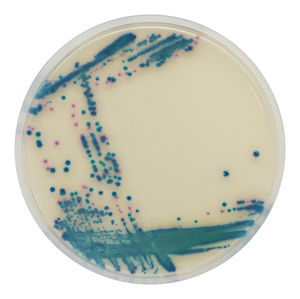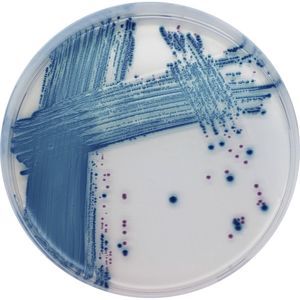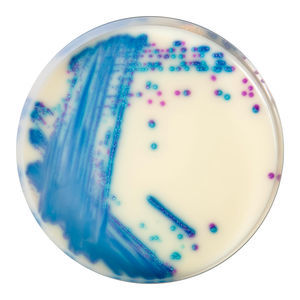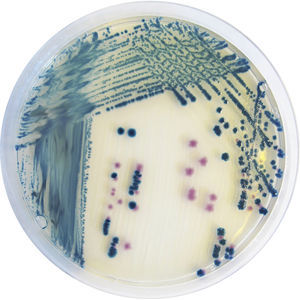
Medium reagent SC172for microbiologyfor urine samplesfor stool samples
Add to favorites
Compare this product
Characteristics
- Type
- reagent medium
- Applications
- for microbiology, for urine samples, for stool samples
- Micro-organism
- Escherichia coli, enterobacteriaceae, for coliforms, Pseudomonas spp, NDM, OXA-48
- Method
- chromogenic
- Other characteristics
- high-sensitivity
- Storage temperature
15 °C, 30 °C
(59 °F, 86 °F)
Description
CDC: «Carbapenem-resistant Enterobacteriaceae (CRE) are usually resistant to all β-lactam agents as well as most other classes of antimicrobial agents. The treatment options for patients infected with CRE are very limited. Healthcare-associated outbreaks of CRE have been reported. Patients colonized with CRE are thought to be a source of transmission in the healthcare setting. Identifying patients who are colonized with CRE and placing these patients in isolation precautions may be an important step in preventing transmission».
CHROMagar™ launched in 2007 the first chromogenic medium for the detection of carbapenem-resistant bacteria, particularly targeting KPC-enzymes. Since then, many other carbapenemases have been spreading around the world and therefore there was a need to address today the difficult detection of low level carbapemases.
Alain Rambach and Patrice Nordmann have joined their efforts to develop a highly sensitive chromogenic medium, CHROMagar™ mSuperCARBA™, the new generation of chromogenic media that reaches unprecedented performances: detection of a large variety of carbapenemases KPC, NDM, VIM, IMP, OXA…with an impressive limit of detection (10 CFU/mL) even for weakly expressed carbapenemases like OXA-48, while maintaining a high level of selectivity.
Intended Use :
CHROMagar™ mSuperCARBA™ is a selective and differential chromogenic culture medium, intended for use in the qualitative direct detection of gastrointestinal colonization with carbapenem-resistant Enterobacteria (CRE), including OXA-48 producers, to aid in the prevention and control of CRE in healthcare settings.
Catalogs
No catalogs are available for this product.
See all of CHROMagar‘s catalogsRelated Searches
- Solution reagent kit
- Molecular biology reagent kit
- Diagnostic reagent kit
- Laboratory reagent kit
- Enzyme reagent kit
- Histology reagent kit
- Reagent medium reagent kit
- Bacteria reagent kit
- Blood sample reagent kit
- Clinical reagent kit
- Microbiology reagent kit
- Tissue reagent kit
- Gene reagent kit
- Colorimetric reagent kit
- High-sensitivity reagent kit
- Metal reagent
- Escherichia coli reagent kit
- Powder reagent kit
- Environmental analysis reagent kit
- Fungi reagent kit
*Prices are pre-tax. They exclude delivery charges and customs duties and do not include additional charges for installation or activation options. Prices are indicative only and may vary by country, with changes to the cost of raw materials and exchange rates.














